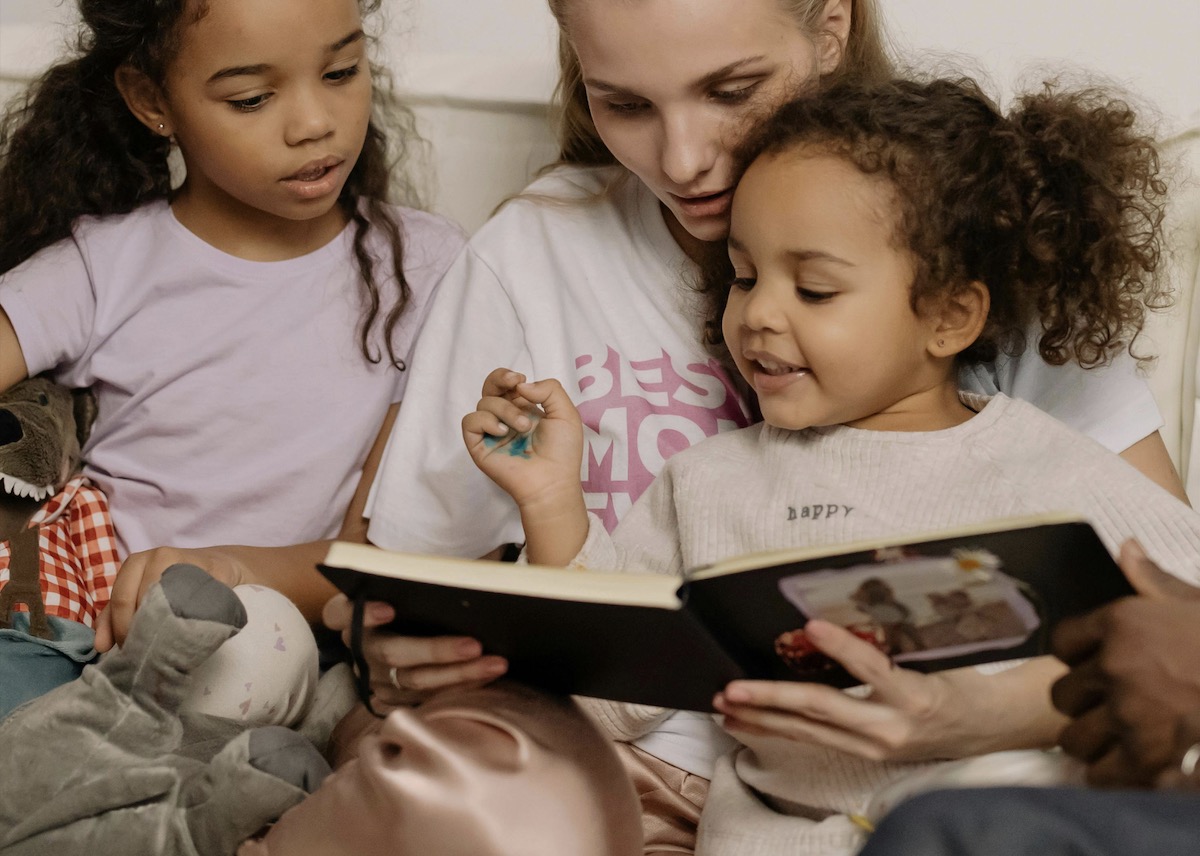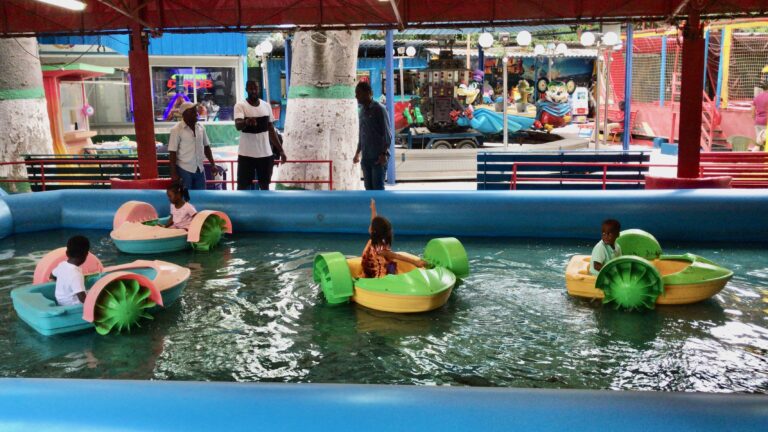The Beginner’s Guide To Raising Multilingual Children
So, at home you speak…? Can they speak…? Wait, what language do they speak?
We are an intercultural family of a German momma, Senegalese papa, and three girls under 4 living in Japan. Whenever we meet someone new it takes about ten minutes to explain what languages we speak, what input the girls get from where and how well we all speak which language. Their multilingualism is part of what makes them Global Babies for me.
Our language situation has been the following: Momma speaks German, English, French, Portuguese and learning Japanese. Pap aspeaks French, English, Japanese and kind of picking up German. Between us we speak English. As we live in Japan, Japanese is what you hear in the streets, shops, etc.
When I was pregnant with our first daughter, I started reading about raising kids bi-/multi-lingually and learned about OPOL (One Parent, One Language). This seemed like a respected and known concept. With both of us having different mother tongues which we wanted to pass on, it seemed to fit for our family. Therefore, my research didn’t go much further at the time. For Japanese, we hoped that she would pick it up in Kindergarten. For English, we figured she will pick it up later in life at some point so that there was no need to focus on it now.
5 years into motherhood and raising multi-lingual children, with my youngest daughter just starting out to talk, it feels like a good time to look into look into raising kids multilingually again – and maybe more throughly. This is the post, I should have read when I was pregnant with my first daughter.
Definition of Terms
The mother tongue is the first language a person learns from birth, often used interchangeably with the term native language. The home language is the language or languages spoken within the family environment. This may or may not be the same as the mother tongue.
Bilingual refers to a person who is fluent in two languages, while multilingual describes someone who can communicate effectively in three or more languages.
A balanced bilingual is a person who has roughly equal proficiency in two languages across different contexts and settings.
Biliteracy: Biliteracy is the ability to read and write proficiently in two languages.
Super literacy typically refers to advanced literacy skills, often involving the ability to read and write in multiple languages and understanding complex texts.
Code switching is the ability or practice of alternating between two or more languages or dialects within a conversation or discourse.
A simultaneous bilingual is a person who learns two languages from birth or early childhood at the same time.
A sequential bilingual is someone who first learns one language and then acquires a second language, usually after the first language has been established.
The majority language is the language spoken by the dominant group in a particular community or country, often used in public life, education, and government.
A minority language is a language spoken by a smaller group within a community or country, often different from the dominant or majority language.
Child Directed Input (CDI) refers to the language and speech patterns specifically directed at children by adults to facilitate language learning, often characterized by simplified vocabulary, exaggerated intonation, and repetition.
Primary input is the main language exposure or interaction a child receives, often from parents or primary caregivers, which significantly influences language development.
Secondary input refers to additional language exposure a child receives outside the primary language, such as from extended family, community, or media, contributing to language development but to a lesser extent.
Family Target Language (FTL) is the language that a family deliberately chooses to use in their home for communication and cultural preservation, often to ensure consistent language exposure for the children.
A Family Language Plan (FLP) is a deliberate strategy or plan developed by families to promote language learning and use among their children, often specifying which languages will be spoken in different contexts or by different family members.
Strategies to raise bi-/multi-lingual children
One Parent, One Language (OPOL) Strategy
The OPOL strategy involves each parent consistently speaking a different language to the child. This method ensures that the child is exposed to two languages simultaneously, with clear differentiation between them.
Minority Language at Home (MLAH) Strategy
The MLAH strategy involves speaking only the minority language at home while the majority language is learned outside the home, such as at school or in the community. This approach helps strengthen the minority language by ensuring regular exposure in a natural setting.
Time and Place (T&P) Strategy
The T&P strategy designates specific times or places for speaking different languages. For example, a family might use one language during weekdays and another on weekends. They might also alternate languages depending on the setting, such as home versus public places.
Mixed Language Family Strategy
In mixed language families, different family members may speak different languages based on individual preferences, comfort, or proficiency. This approach allows for flexible language use but may require additional effort to maintain balanced exposure to each language.
Outside Resource Families Strategy
The Outside Resource Families strategy relies on external resources, such as schools, community groups, or language classes, to provide exposure to additional languages. This method supplements the primary language(s) spoken at home with structured or informal language learning opportunities outside the home.
Tipps & Tricks
Raise children in the language that you are comfortable in, most likely your mother tongue.
Input: Make sure they get a lot of CDI in their home languages. In the Netflix documentary ‘Babies’ there is an episode on speech development. According to a study the more words you speak to a child per day, the more words the child will speak itself. Input from screens doesn’t work during the first two years of their lives.
Balance and richness: There is no ideal strategy. The right strategy depends on the circumstances of each family, their FTL and FLP. To support the language acquisition balance and richness of input are important. Balance to receive the same amount of input in the different languages you want them to learn. Richness with regards to the variety of vocabulary that is being used in a certain language.
Context and purpose: Language has context and purpose for which we learn or use it. Try to discuss all topics in all the languages. This avoids the child feeling like they cannot express themselves about something to a particular person due to the language they’re speaking to each other.
Re-Casting: Don’t correct, repeat in the right way. When children don’t say something in the right way, don’t correct them. Provide them with the correct version in rephrasing what they said or in the answer to their question.
Resources
There are many resources for bilingual families and raising children bilingually. Even for three languages there is some. However, for raising children with four languages there are less resources. We can of course draw on the other two categories for advice. These are resources I have used and liked:
- Bilingual Parenting Podcast
- On Raising Bilingual Children (Website & Instagram)
- Multilingual Children Book
- Toolbox for Multilingual Families
- Multilingual Parenting Facebook Group
Conclusion
If you want to raise your child bi-/multi-lingually, be aware that there is not just the one perfect strategy. Your choice of strategy will depend on your FLP and FTL. It will depend on the country you live in and what the majority and minority languages for your family are. Make sure you provide balanced and rich input. Always strengthen the home language as it is the basis for all other learning.
When I tell people that my children grow up with 4 different languages, they always look between shocked and amazed. “They will either be geniuses or confused” is often my comment to their reaction. Stay tuned to find out in how it’s going in one of my next posts.
If you’re raising your children multi-lingually, let me know your language combinations and how it’s going.
Picture by Cotton Bro Studios on pexels






